How to Fillet, Clean and Debone Fish
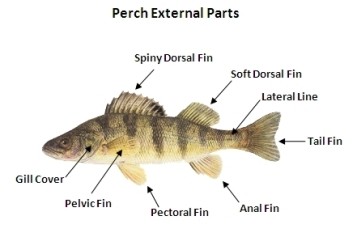
If you’re interested in eating what you catch it’s important that you keep your fish fresh before you start.
We keep clean fish in mind when we set out to catch the fish we are going to eat we keep our fish in a live well. They stay there before we begin. Sometimes we keep them in a cooler with the water we’re fishing in. Most freshwater fish will die after being out of the water for a short period of time. Fish will spoil easily, so it’s best to plan on catching and cleaning them right away because you want to eliminate that “fishy” odor.
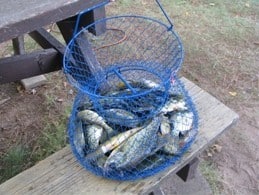
- Working table
- A good fish cleaning knife (I use an electric knife)
- Bowl with cold drinking water for the cleaned fish
- Newsprint or bucket for discarded fish parts
- Damp cloth to clean your hands
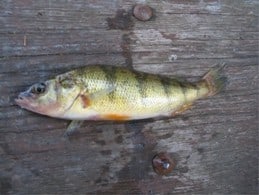
For this example I will be using a Perch. You can remove the scales of the fish with a fish scaler or a large spoon before you begin cleaning the fish. However, if you are filleting a fish you really don’t need to remove the scales as you won’t be eating them. Some like to do so.
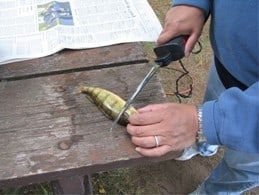
Be careful when using a knife. Remember safety at all times. Visit our “First Aide” section to learn about safety.
As you can see I’m using an old outdoor board table to clean my fish as I want to make sure that I clean the fish outdoors.
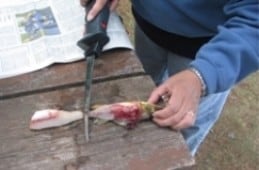
This is an easy step, just take your time so that you let the blade do it’s job.
As you can see, I’m holding the head of the fish as I start this process so that my hands are away from the blade. Once the blade moves toward the tail you can move your hand on the rib meat to hold the meat in place.
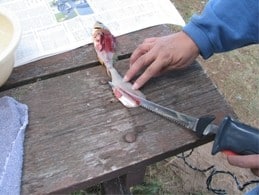
Use water to wash off your cutting area as you want this area to stay clean. Fish odor attacks all types of unwanted animals.
Wrap the fish guts in the newsprint and dispose in a sealed garbage container to prevent odors from escaping. I tend to place this newsprint in a sealed plastic bag then in a sealed garbage container. This prevents any odor from escaping.
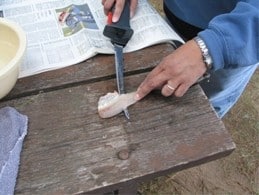
Don’t cut too close to the skin as you want to not want scales left on the rib meat. Take your time.
Be careful when holding the rib meat as the knife will be close to your fingers. This processes is easier when cleaning larger fish. Smaller fish’s rib meat makes it difficult to hold when the knife is in close proximity to your finders.
Again, discard the skin onto the newsprint.
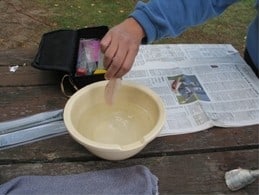
When you have finished filleting all your fish, wash each fish in cold drinking water, pat dry with a clean cloth or paper towel. The fillets are ready to cook or freeze.
It’s important to know that not all fish are safe to eat so research which fish are edible. It’s also important that you make sure you have washed the fish thoroughly before you prepare them just like you need to keep your hands clean during this process as well.
Visit our “How to Cook Fish” section to learn how to prepare a wonderful meal.

